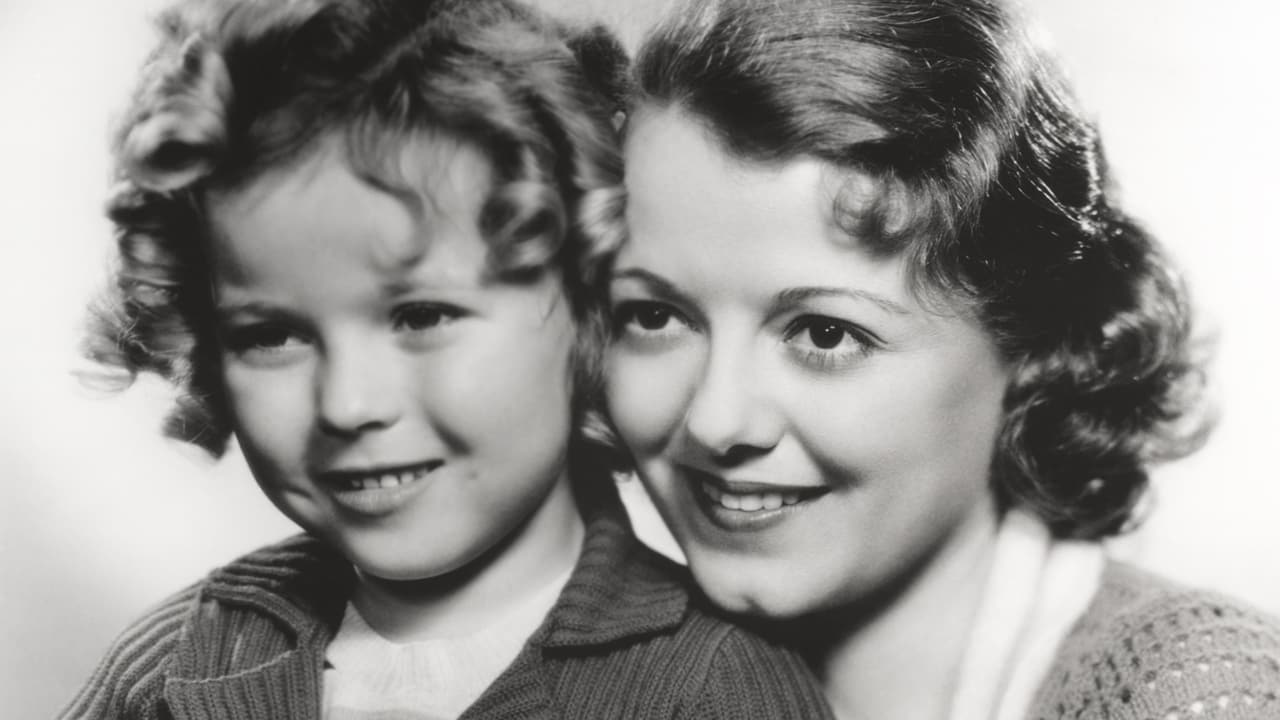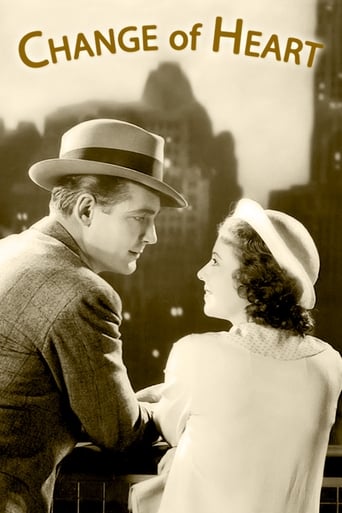Develiker
terrible... so disappointed.
Cathardincu
Surprisingly incoherent and boring
Roy Hart
If you're interested in the topic at hand, you should just watch it and judge yourself because the reviews have gone very biased by people that didn't even watch it and just hate (or love) the creator. I liked it, it was well written, narrated, and directed and it was about a topic that interests me.
Blake Rivera
If you like to be scared, if you like to laugh, and if you like to learn a thing or two at the movies, this absolutely cannot be missed.
JohnHowardReid
Copyright 15 May 1934 by Fox Film Corp. New York opening at the Radio City Music Hall, 10 May 1934 (ran one week). U.K. release: 8 September 1934. Australian release: 10 October 1934. New Zealand release: 29 December 1934. New Zealand length: 7,824 feet. 87 minutes. U.S. length: 6,937 feet. 77 minutes.SYNOPSIS: After graduating from college, four friends seek fame and fortune in New York.NOTES: The Academy of Motion Picture Arts and Sciences granted a miniature statuette to Shirley Temple "in grateful recognition of her outstanding contribution to screen entertainment during the year 1934." DVDs of this movie are currently offered by Public Domain suppliers.COMMENT: Although this movie was certainly released in 1934 (it ran a week in May at the Radio City Music Hall), it is extremely doubtful if the Board of Governors had this picture in mind when awarding Shirley her miniature statuette. Even though her name is prominently displayed in the film's advertising, it's nonsense to talk about her being in this movie. As a passenger in an airliner en route to New York, she's on screen for about 3 minutes! (Admittedly, I'm talking about the 77-minute USA version)."Change of Heart" is primarily a Farrell-Gaynor vehicle — their last. The combination is stale here. Miss Gaynor looks old too (though she was reportedly only 28 at the time), being flatly photographed and rather dowdily dressed. The photographer and costumer do similar disservices to Ginger Rogers and Drue Leyton, though Barbara Barondess looks attractive in her brief appearance. As for Charles Farrell, he is, would you believe, somewhat wooden and charmless? Farrell was handsome enough and well-spoken enough to survive the transition to sound, but he floundered, partly due to lack of talent (although this didn't deter many other people), but mostly due to sheer laziness. He simply didn't like to work for hard taskmasters like Frank Borzage or F. W. Murnau. Easy- going Johnny Blystone was definitely his favorite sort of director.So it's no surprise to find the support players are not much better. James Dunn is always talking about his singing career, but outside of a bit of clowning around, doesn't sing a note (whereas minor player Dick Foran sings solidly for two whole minutes — and alas that two minutes is the sole extent of his on screen contribution. What a pity his part isn't larger)! Nonetheless, Mary Carr makes the most of her one-take scene. And it's always good to see Jane Darwell, even though she is glimpsed but briefly.Blystone's direction starts briskly at the graduation, which is nicely paced and composed, but once in New York his efforts become quite routine and undistinguished, although the deft cutting of Margaret Clancey does something to spark a bit of dramatic life into certain scenes.Production values are moderate. Stock footage of New York is used liberally throughout. Although treating the girls somewhat harshly, Hal Mohr's lighting is rich in attractively glossy blacks. Aside from the opening graduation scenes, the sets, however, — even those supposed to be luxurious — prove disappointingly drab.
zafrom
If you like the main players in this picture -- Gaynor, Farrell, Dunn, and Rogers -- then you will enjoy this modest picture. Otherwise it could be around 2-1/2 stars out of 4 stars. It looks economically made and, per IMDb's Release Dates, Fox released it only 3 weeks after Stand Up and Cheer! But could it have been filmed first? Shirley Temple is very recognizable in the film, for all of the 3/4 of a second that she is on camera, without even a chance to speak. If Stand Up and Cheer! gave to her her breakthrough role, then why was she all but cut from Change of Heart? Another missed opportunity was Mischa Auer's who has maybe 5 seconds and 1 line. Symptoms of what encouraged Fox to merge the next year with Twentieth Century Pictures?As other reviewers have mentioned, this is still a heartwarming film. Besides the lovey-doveyness of Gaynor and Farrell, Rogers is also fun. She seemingly tries to vamp any guy who comes her way. Dunn's performance reminded me of Johnny Nolan 11 years later in A Tree Grows in Brooklyn, and here he is even more optimistic, even though they all start out in low rent accommodations.One of my favorite scenes is the 2+ minutes with Gaynor and Farrell on the boat to Coney Island. Not so much for what they talk about as for the background music. The scene starts out showing couples dancing, and the music that the band plays for the 2+ minutes is "Broadway's Gone Hill-Billy" (AKA ...Hillbilly; 1934 recordings used both spellings). Yes, the same song featured in Stand Up and Cheer! Fox, like the other studios, evidently liked to promote its music library. Hillbillyness has nothing to do with either Gaynor or Farrell (neither one particularly sprightly in this scene), and the dancers also appear oblivious to the unsung lyrics, but the tune is still guaranteed to get you out onto the dance floor. Yet another of the enjoyable scenes in Change of Heart.
edwagreen
Very dated 1934 with Janet Gaynor again playing a sweet, loving girl who with 3 friends come to N.Y. to find fame and fortune after graduation from college. The 3 friends are James Dunn, Charles Farrell and a spunky, but nasty Ginger Rogers.Basically, a love quadrangle soon develops. Farrell loves Rogers, Gaynor loves Farrell and Dunn loves Gaynor. Of course, a selfish Rogers, runs off with a wealthy guy and soon realizes he is not for her. In the interim, being nursed back to health after falling ill, Farrell realizes that Gaynor is for him and the two wed and live in a 4th floor walk-up. Is this almost "Seventh Heaven" again?At least, this film ends happily.
drednm
Change of Heart is the last of 12 films Janet Gaynor and Charles Farrell starred in together. From the late silent period til this 1934 film, they were among the most popular of screen teams. Here they play college graduates aspiring to make it in New York City along with pals Ginger Rogers and James Dunn.Pleasant story of ambition and love among the young set. The film also boasts some solid supporting players, including Jane Darwell, Beryl Mercer (excellent as the salvage lady), Mischa Auer, Dick Foran (billed as Nick?), Irene Franklin, Lillian Harmer, Bess Flowers, Gustav von Seyffertitz, Nella Walker, Mary Carr, Mary Gordon, Shirley Temple (on the plane) and James Gleason.This was one of Rogers' last supporting parts (same year she became a star in Flying Down to Rio). She plays (she's excellent) the selfish Madge who marries a rich man rather than stick with the group and find work. This is probably Rogers' most unsympathetic role. Dunn is a bit much as the Irish crooner. Farrell plays the lovesick goon, and Gaynor (one of the most sympathetic stars of the 30s) plays the fiery redhead who keeps everything going.Nice film with a good view of New York City in 1934.

